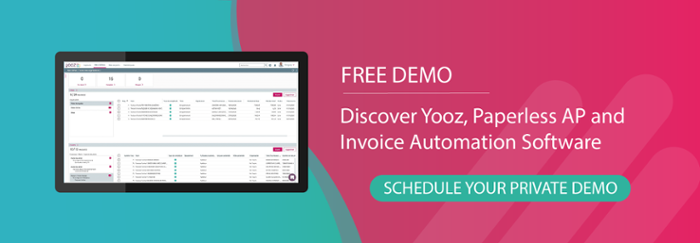The traditional company invoice workflow is a series of manually intensive, heavily paper-based tasks including entering invoice data, creating invoices, manual checks and balances, plus endless amounts of filing. Somebody needs to physically receive the documents, save the information, hopefully catch any fraud or errors, and maintain a physical container space for storage.
Electronic invoicing (e-invoicing) takes all these same processes and activities and conducts them digitally over an electronic interchange. No more waiting for the mail or fax machine, e-invoicing lets you both receive and submit payments. Compared to traditional invoicing, e-invoicing is much more reliable, scalable, and sustainable. It reduces data entry errors, shortens processing times, and results in far less paper. By eliminating most if not all of the manual tasking throughout the process and consequently, e-Invoicing also eliminates the susceptibility to human error as well.
Also, because the information can be viewed across systems both wherever and whenever, it becomes far easier for the accounts payable team to collaborate on invoices, manage cash flows, escalate payments (or not), optimize their working day, and even reduce or eliminate the possibility of error and fraud.
However, although all invoices can be sent and received electronically in some form not all of these are considered "real" e-invoices.
Let's talk about reality
"Real" e-invoices use something called "structured invoice data" and are issued using Electronic Data Interchange (EDI) or XML formats. Because these formats use structure data (such as markers and tags to separate different elements), invoice processing tools can automatically validate and prepare them for posting and payment. Unfortunately, this means that most PDF invoices don't count as they are considered unstructured. That doesn't mean that a PDF invoice can't be digitally processed, it just involves an additional step where they are converted into a standard digital format. Naturally this is known as PDF invoice processing.
How does e-invoicing work?
Just like every automation process, there is a system order and series of steps to ensure efficiency. Let's assume that your organization has an invoice for your customer (although the system works in both directions).
First, you generate an invoice from your Enterprise Resource Planning (ERP) system and send it to the customer. You've already confirmed that the two systems can work seamlessly together so you know that the invoice will be received on the other end.
Upon receipt, the customer's e-invoicing system will automatically analyze and convert the information into their preferred file type. They will then transfer it to both your system as well as their own. By having a system convert the e-invoice, both you and your customer automatically adhere to your respective standards for compliance and auditing. No need to change a thing.
Also, because the e-Invoices are in a standardized electronic format, they are easily transmitted using any method already agreed upon by the sender and the recipient. These include (but are not limited to):
- FTP, SFTP and FTPS
- HTTP
- AS1, AS2 and AS4
- OFTP
- Mobile EDI
For complete control, some businesses will set up separate guidelines to govern what standard protocol will be used to send or receive the e-Invoices across the enterprise.
Why is e-invoicing important?
First and foremost, no invoice means no payment. Likewise, the faster the process, the faster the payment. While those statements are overly simplistic and only superficially touch on the benefits of automation, they make is clear why e-invoicing is now one of the fastest growing methods of invoicing. In fact:
- It removes the complexity associated with traditional invoice processing, distilling it down to just sending, converting, and receiving invoices in the desired format.
- As more and more businesses digitize their processes and regulatory bodies introduce new compliance requirements, having a system in place to capture digital records of transactions and deliver and receive them in an appropriate fashion is crucial.
- The audit trail has become a non-negotiable, mandatory building block of any electronic process. There needs to be clear, end-to-end visibility of invoicing so that processes can be reviewed and enhanced.
For these reasons alone e-invoicing is quickly becoming the norm in many European countries.
What about the legal requirements?
Benefits aside, there are legal requirements now in place for digital interactions designed to improve accuracy and reduce fraud opportunities. For example, let’s consider Making Tax Digital (MTD) requires businesses to keep digital records and archives for six years. Consequently, as a direct result of the manual, physical, and cost benefit of digital over paper-based records, traditional processes are gradually being phased out. These legal requirements aren't being viewed as a compliance burden but rather an opportunity for businesses to optimize their processes.
And it’s not just MTD... Across the globe, governments are implementing measures to ensure that invoicing is done and recorded digitally.
How can any of this help me?
Legal requirements aside, e-Invoicing provides much-needed convenience when it comes to the day-to-day management of and relationships with suppliers. Exchanges are more fluid, information is accessible directly, deadlines are shortened, and verification is easier. When combined with a complete accounts payable automation system, the entire process from pay-to-procurement becomes streamlined and efficient.
- Cloud-based invoice automation software captures all your invoices in one place whether they are scanned or emailed, imported, or delivered through EDI, and even converted from PDF.
- On receipt, the AI and machine learning software technologies embedded in these platforms automatically analyze the invoices and extract the most pertinent information and numbers. This information is compared to ensure accuracy (and flagged if there is any issue). All this information is stored securely in the cloud so there is always a comprehensive audit trail.
- Once the information is received, intelligent workflows will automate the approvals and payment process.
- A holistic automation system will identify the amount to be paid, select the payment method, automatically pay the vendor, wait for confirmation, and even update the payment status.
Plus, because these solutions integrate seamlessly with more than 250 ERPs worldwide, your suppliers and customers have a completely transparent view of activity. No bottlenecks.
Want to learn more about these platforms, including how they can help you with compliance and increase your e-Invoicing efficiency?





